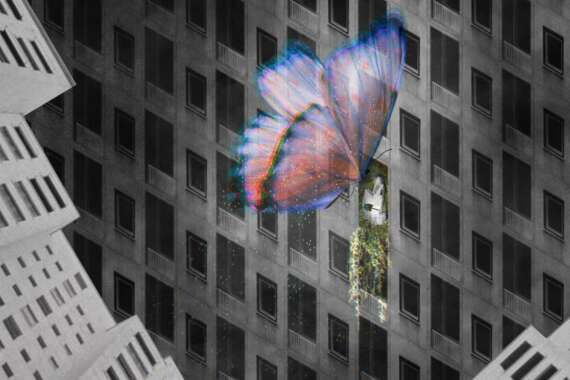Homo-Cellular

"What makes the human human is not inside the body or brain, or even inside the collective social body, but in our interdependency with artefacts."
This project proposes a semi-fantastical urban public space and playground that activates the physicality of the human body and the body’s sense of proprioception, that is, the body’s physical sense of its own movements. This is to counteract and comment on the disembodiment of contemporary digital culture.
Our everyday life has increasingly shifted towards digitisation as arrays of multiple and simultaneous images surround us in modern society. With devices such as phones and computers becoming mainstream in work, social settings, and private lives, the world within digital screens has become more important to us than the spaces we inhabit physically. Digital spaces like social media platforms have emerged as new habitats, seamlessly blending with our physical world. They expedite communication via virtual avatars and transform how we interact, receive, and give information.
In response, this thesis proposal investigates how we can alter our urban environment to bridge the gap between social media interactions and physical spaces. This urban space proposes possible remedies against the erosion of physicality and the numbing of the physical body due to the use of digital screens. However, some parts of the project could also be interpreted as deliberately exacerbating and satirising the contemporary ubiquity of digital screens.















